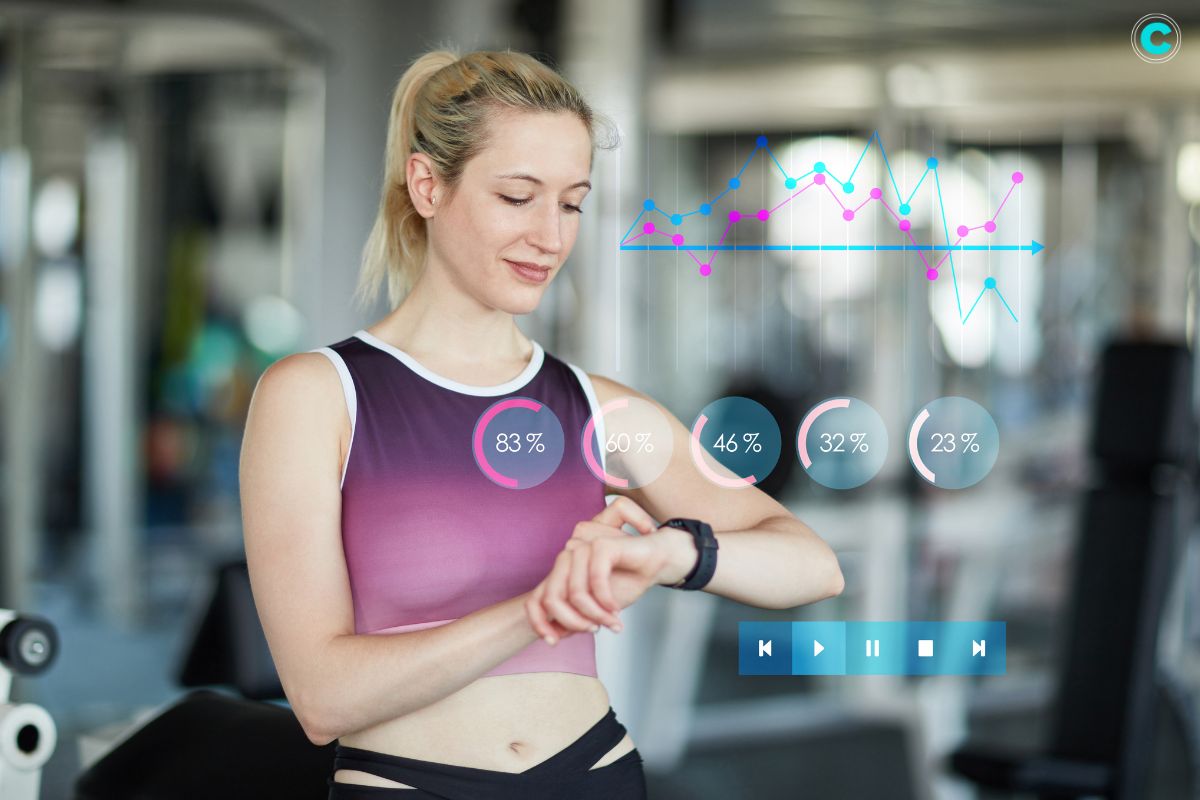In an era defined by rapid technological advancements, wearable technology stands out as a very important innovation transforming how individuals interact with digital devices and integrate technology into everyday life. From smartwatches and fitness trackers to augmented reality glasses and smart clothing, wearable devices have evolved beyond mere accessories to become indispensable tools that enhance productivity, monitor health metrics, and offer immersive experiences across various industries.
This SEO blog explores the evolution, applications, benefits, challenges, and future trends of wearable technology, highlighting its transformative impact on individuals and businesses alike.
Evolution of Wearable Technology
The evolution of wearable technology traces back to the early 20th century, primarily driven by advancements in miniaturization, sensor technology, and wireless connectivity. While early iterations focused on basic functionalities such as timekeeping and basic health monitoring, recent decades have witnessed exponential growth in capabilities and applications. The convergence of hardware innovation, software development, and data analytics has propelled wearable devices into mainstream adoption across consumer, healthcare, industrial, and enterprise sectors.
Key Applications
Wearable technology encompasses a diverse array of applications, each offering unique benefits and functionalities tailored to specific user needs:
1. Health and Fitness Monitoring:
Wearable devices such as fitness trackers and smartwatches monitor biometric data, including heart rate, sleep patterns, calories burned, and physical activity levels. These devices empower individuals to track their fitness goals, monitor progress, and adopt healthier lifestyle habits through real-time feedback and personalized insights.
2. Medical and Healthcare
In the healthcare sector, wearable technology plays a pivotal role in remote patient monitoring, chronic disease management, and telemedicine. Devices like continuous glucose monitors (CGMs), smart health patches, and wearable ECG monitors enable healthcare providers to remotely monitor patient health metrics, improve treatment adherence, and deliver personalized care.
3. Augmented Reality (AR) and Virtual Reality (VR)

AR glasses and VR headsets extend the possibilities of immersive experiences across industries such as gaming, entertainment, education, and professional training. These devices overlay digital information onto the user’s physical environment (AR) or create entirely virtual environments (VR), enhancing user engagement, learning outcomes, and productivity in diverse settings.
4. Smart Clothing and Fashion Tech
Smart clothing embedded with sensors and conductive fabrics monitor biometric data, posture, and environmental conditions. Applications range from sports performance optimization and healthcare monitoring to ergonomic solutions in workplace environments, combining fashion with functionality to enhance user comfort and performance.
Benefits
The adoption of wearable technology offers a multitude of benefits for individuals and organizations:
1. Enhanced Connectivity and Convenience
Wearable devices keep users connected to essential information, notifications, and communication channels without the need for traditional devices. They offer seamless integration into daily routines, providing hands-free access to data, alerts, and communication in various contexts.
2. Personalized Health and Wellness
Continuous monitoring of health metrics empowers individuals to take proactive measures toward their health and well-being. Wearable devices provide actionable insights, personalized recommendations, and real-time feedback, fostering healthier habits and improved overall fitness outcomes.
3. Improved Efficiency and Productivity
In enterprise settings, wearable technology enhances operational efficiency, employee productivity, and safety. Devices like smart glasses facilitate hands-free access to instructions, data visualization, and remote assistance, streamlining workflows and optimizing task performance across industries such as logistics, manufacturing, and field service.
4. Data-Driven Insights
Wearable devices generate vast amounts of data on user behavior, biometric trends, and environmental factors. Advanced analytics and machine learning algorithms analyze this data to derive actionable insights, enabling predictive analytics, personalized recommendations, and continuous improvement in performance and outcomes.
5. Innovation and Competitive Advantage
Organizations leveraging wearable technology differentiate themselves by offering innovative products, services, and customer experiences. These technologies drive market differentiation, attract tech-savvy consumers, and enhance brand loyalty through cutting-edge solutions that integrate seamlessly into modern lifestyles.
Challenges and Considerations
1. Privacy and Security Concerns
Collecting, storing, and transmitting personal health data raises privacy concerns and cybersecurity risks. Manufacturers must implement robust encryption protocols, data anonymization techniques, and compliance with data protection regulations (e.g., GDPR, HIPAA) to safeguard user information and maintain trust.
2. Battery Life and Usability

Many wearable devices rely on rechargeable batteries with limited capacity, posing challenges in managing power consumption and extending battery life. Enhancements in battery technology and energy-efficient design are critical to improving device longevity and user satisfaction.
3. User Interface and Experience
Designing intuitive user interfaces and ensuring seamless user experiences are essential for wearable technology adoption. Factors such as device ergonomics, display visibility, and ease of interaction influence user acceptance and satisfaction across different demographics and use cases.
4. Interoperability and Integration
Integrating wearable devices with existing IT infrastructure, applications, and IoT ecosystems requires compatibility and interoperability standards. Seamless data exchange and connectivity across devices enhance functionality and user utility in interconnected environments.
5. Ethical and Social Implications
The widespread adoption of wearable technology raises ethical concerns regarding data ownership, consent for data usage, and potential misuse of personal information. Addressing these concerns through transparent policies, ethical guidelines, and user education is crucial to building trust among users and stakeholders.
Future Trends
Looking ahead, several trends are shaping the future of wearable technologies:
1. Healthcare Innovations
Wearable devices will continue to evolve with advancements in medical sensors, AI-powered analytics, and telemedicine capabilities, enhancing healthcare delivery, and patient outcomes through remote monitoring and personalized care solutions.
2. Artificial Intelligence (AI) Integration
AI-driven wearable devices will offer advanced functionalities such as predictive health analytics, real-time coaching, and adaptive user experiences based on personalized data insights, transforming how individuals manage their health and well-being.
3. Fashion and Design Integration
Collaborations between technology firms and fashion brands will drive the development of stylish, customizable wearable devices that blend seamlessly into everyday attire, appealing to fashion-conscious consumers and enhancing user adoption.
4. Extended Reality (XR) Experiences
AR glasses and VR headsets will evolve to offer enhanced immersive experiences across diverse industries, including entertainment, education, virtual collaboration, and industrial applications, redefining user interactions with digital content and environments.
5. IoT and Smart Ecosystem Integration

Wearable devices will integrate more closely with IoT ecosystems and smart home technologies, enabling seamless connectivity, environmental automation, and personalized user experiences tailored to individual preferences and lifestyles.
Conclusion
Wearable technologies represent a transformative force driving innovation, connectivity, and personalization across industries and lifestyles. As these technologies continue to evolve, addressing challenges such as privacy, security, and usability will be crucial to their widespread adoption and integration into everyday life. By harnessing the potential of wearable devices, individuals and organizations can embrace a future where technology enhances productivity, fosters healthier lifestyles, and empowers users to navigate an increasingly interconnected digital landscape with confidence and convenience.






